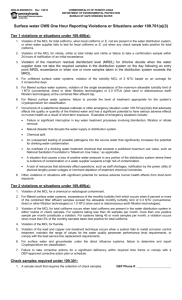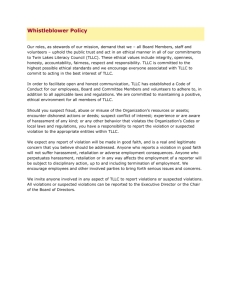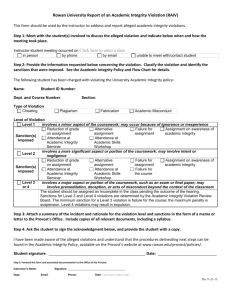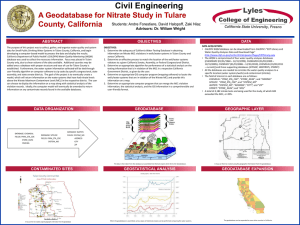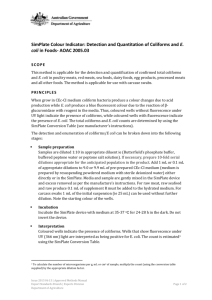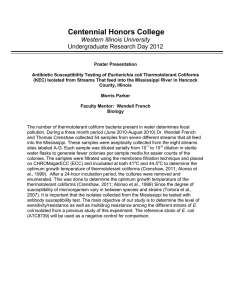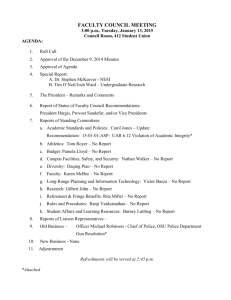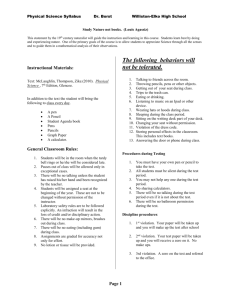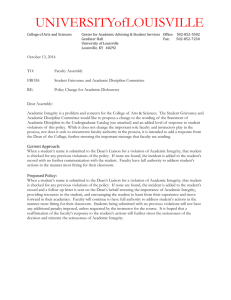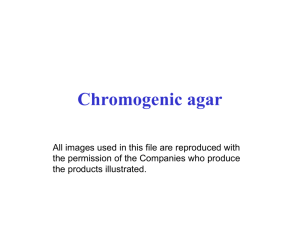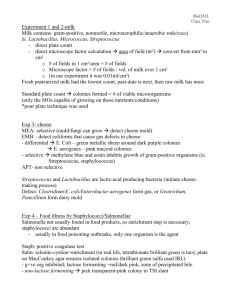Groundwater CWS One Hour Reporting Violation or
advertisement
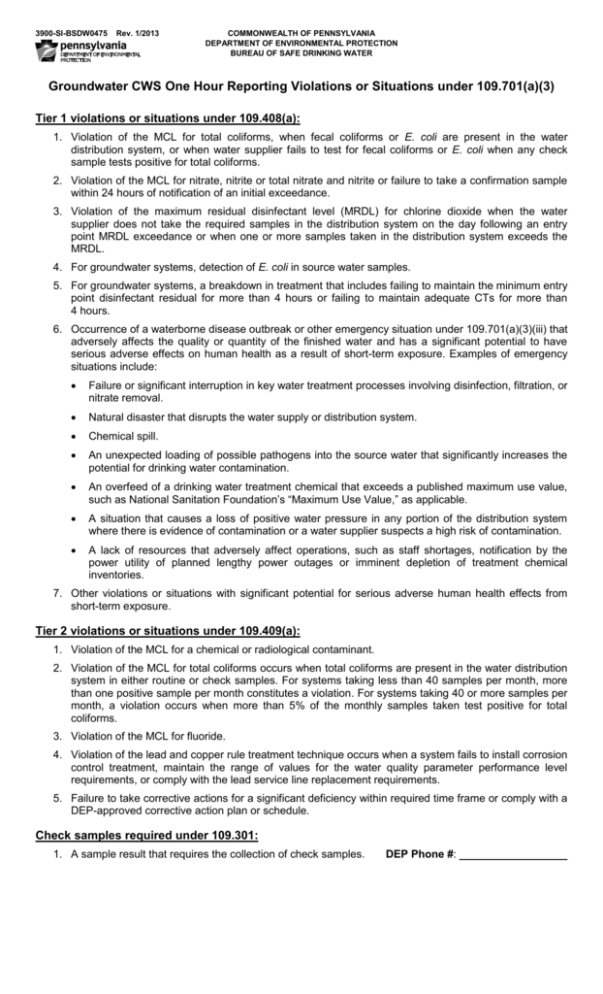
3900-SI-BSDW0475 Rev. 1/2013 COMMONWEALTH OF PENNSYLVANIA DEPARTMENT OF ENVIRONMENTAL PROTECTION BUREAU OF SAFE DRINKING WATER Groundwater CWS One Hour Reporting Violations or Situations under 109.701(a)(3) Tier 1 violations or situations under 109.408(a): 1. Violation of the MCL for total coliforms, when fecal coliforms or E. coli are present in the water distribution system, or when water supplier fails to test for fecal coliforms or E. coli when any check sample tests positive for total coliforms. 2. Violation of the MCL for nitrate, nitrite or total nitrate and nitrite or failure to take a confirmation sample within 24 hours of notification of an initial exceedance. 3. Violation of the maximum residual disinfectant level (MRDL) for chlorine dioxide when the water supplier does not take the required samples in the distribution system on the day following an entry point MRDL exceedance or when one or more samples taken in the distribution system exceeds the MRDL. 4. For groundwater systems, detection of E. coli in source water samples. 5. For groundwater systems, a breakdown in treatment that includes failing to maintain the minimum entry point disinfectant residual for more than 4 hours or failing to maintain adequate CTs for more than 4 hours. 6. Occurrence of a waterborne disease outbreak or other emergency situation under 109.701(a)(3)(iii) that adversely affects the quality or quantity of the finished water and has a significant potential to have serious adverse effects on human health as a result of short-term exposure. Examples of emergency situations include: Failure or significant interruption in key water treatment processes involving disinfection, filtration, or nitrate removal. Natural disaster that disrupts the water supply or distribution system. Chemical spill. An unexpected loading of possible pathogens into the source water that significantly increases the potential for drinking water contamination. An overfeed of a drinking water treatment chemical that exceeds a published maximum use value, such as National Sanitation Foundation’s “Maximum Use Value,” as applicable. A situation that causes a loss of positive water pressure in any portion of the distribution system where there is evidence of contamination or a water supplier suspects a high risk of contamination. A lack of resources that adversely affect operations, such as staff shortages, notification by the power utility of planned lengthy power outages or imminent depletion of treatment chemical inventories. 7. Other violations or situations with significant potential for serious adverse human health effects from short-term exposure. Tier 2 violations or situations under 109.409(a): 1. Violation of the MCL for a chemical or radiological contaminant. 2. Violation of the MCL for total coliforms occurs when total coliforms are present in the water distribution system in either routine or check samples. For systems taking less than 40 samples per month, more than one positive sample per month constitutes a violation. For systems taking 40 or more samples per month, a violation occurs when more than 5% of the monthly samples taken test positive for total coliforms. 3. Violation of the MCL for fluoride. 4. Violation of the lead and copper rule treatment technique occurs when a system fails to install corrosion control treatment, maintain the range of values for the water quality parameter performance level requirements, or comply with the lead service line replacement requirements. 5. Failure to take corrective actions for a significant deficiency within required time frame or comply with a DEP-approved corrective action plan or schedule. Check samples required under 109.301: 1. A sample result that requires the collection of check samples. DEP Phone #:
